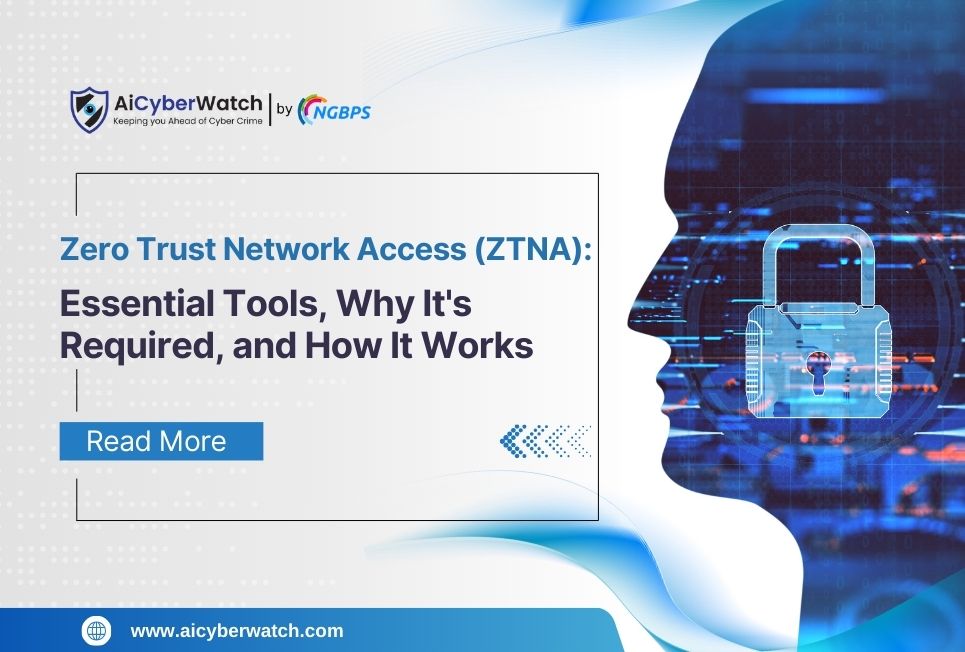In today’s rapidly evolving digital landscape, traditional security models based on perimeter defenses are proving insufficient to protect against sophisticated cyber threats. Organizations are increasingly turning to more robust, dynamic security architectures to safeguard sensitive data and resources. One such approach is Zero Trust Network Access (ZTNA), which operates on the principle of “never trust, always verify.” In this blog, we’ll delve into the essentials of ZTNA, explore the tools required to implement it, and understand how this cutting-edge security model works.
What is Zero Trust Network Access (ZTNA)
Zero Trust Network Access is a security framework that ensures users and devices are never trusted by default, regardless of whether they are inside or outside the corporate network. ZTNA restricts access to resources based on a strict identity verification process and continuous trust evaluation. Unlike traditional Virtual Private Networks (VPNs), which grant users broad access to the network once authenticated, ZTNA limits access only to specific applications and services that the user is authorized to use, thereby reducing the attack surface.
Why is ZTNA Required
1. The Evolving Cyber Threat Landscape
With the rise of sophisticated cyberattacks such as ransomware, insider threats, and phishing, organizations are more vulnerable than ever before. Traditional network defenses are no longer adequate, as attackers have become proficient at bypassing firewalls and gaining access to internal systems. ZTNA minimizes the risk by enforcing granular, context-aware access controls.
2. Remote Work and Hybrid Environments
In the post-pandemic world, remote work has become the norm, which has increased the need for secure access to corporate resources from anywhere, on any device. Traditional perimeter-based security models struggle in this decentralized setup. ZTNA ensures secure access to applications and data from remote locations, ensuring seamless yet secure user experiences.
3. Mitigation of Insider Threats
ZTNA continuously monitors and verifies user activity, meaning that even insiders within the network are subject to constant checks. This is crucial for preventing unauthorized access by malicious employees or compromised accounts.
4. Reduction in the Attack Surface
By providing access on a need-to-know basis, ZTNA drastically reduces the overall attack surface. Users are only granted access to the specific applications and services they need, without exposing the broader network.
How Does ZTNA Work?
ZTNA operates on the principle that no entity, whether internal or external, should be trusted by default. Here’s a step-by-step breakdown of how ZTNA functions:
1. User and Device Authentication
The first step in ZTNA is robust identity verification. Every user and device trying to access the network must go through multi-factor authentication (MFA). This includes verifying the user’s identity through credentials (username and password), biometrics, or hardware tokens. The device itself is also scrutinized to ensure it is authorized and secure.
2. Context-Aware Access Policies
ZTNA uses context-based policies to determine whether to grant access. Factors such as the user’s location, device security posture, time of access, and network conditions are all taken into account. For instance, if a user is logging in from an unfamiliar location or using an unsecured device, they may be denied access or prompted for additional verification.
3. Micro-Segmentation
Unlike traditional security models, where authenticated users are given broad network access, ZTNA enforces micro-segmentation. Each user is restricted to accessing only the specific applications, services, or resources they need to perform their tasks. This minimizes lateral movement across the network, making it harder for attackers to compromise multiple systems.
4. Continuous Monitoring and Trust Evaluation
ZTNA is not a “one and done” approach to security. Trust is continually reassessed throughout a user’s session. Behavioral analysis, threat intelligence, and device health checks are used to detect suspicious activity or changes in the environment. If any anomaly is detected, the system may revoke access or require re-authentication.
5. Encrypted Tunnels
All data transmitted within a ZTNA framework is encrypted to protect against interception and eavesdropping. Encrypted tunnels are created between the user’s device and the application, ensuring that sensitive information remains secure.
Essential Tools for a ZTNA Environment
To implement a ZTNA solution effectively, organizations need a variety of tools and technologies. Here are the essential components:
1. Identity and Access Management (IAM)
IAM solutions play a critical role in ZTNA by enabling centralized control over user identities and access privileges. They manage authentication processes, enforce multi-factor authentication (MFA), and control who has access to what resources.
2. Multi-Factor Authentication (MFA)
MFA is a core requirement in a ZTNA environment. It ensures that access is granted only after the user provides multiple forms of verification, such as a password and a biometric scan. This makes it more difficult for attackers to gain unauthorized access, even if they have stolen credentials.
3. Endpoint Detection and Response (EDR)
EDR tools are critical in monitoring the security posture of the devices accessing the network. These tools help identify suspicious activity, malware infections, or vulnerabilities that could compromise the device and, in turn, the network.
4. Cloud Access Security Brokers (CASB)
As more applications move to the cloud, CASBs provide an added layer of protection by enforcing security policies between cloud service consumers and providers. CASBs help ensure compliance, data protection, and threat mitigation in cloud environments.
5. Network Segmentation and Micro-Segmentation Tools
Micro-segmentation tools break the network into smaller, isolated segments, ensuring that users can only access specific applications and services. This limits lateral movement within the network, reducing the attack surface.
6. Zero Trust Policy Engines
These tools are used to define, enforce, and manage the access policies within a ZTNA environment. They ensure that the right users have access to the right resources at the right time, based on predefined security policies.
7. Threat Intelligence Platforms
By leveraging threat intelligence, ZTNA systems can proactively block known malicious actors or compromised devices from gaining access. Threat intelligence platforms provide up-to-date information on emerging cyber threats and vulnerabilities.
Benefits of Implementing ZTNA
1. Enhanced Security
By reducing the attack surface and ensuring continuous trust verification, ZTNA significantly improves security across the organization. It protects against both external attacks and insider threats.
2. Improved User Experience
ZTNA solutions provide seamless access to resources without the need for cumbersome VPNs, enhancing the user experience for remote and hybrid workers.
3. Reduced Risk of Data Breaches
ZTNA limits access to only what users need, ensuring sensitive data and applications are protected from unauthorized users and malicious insiders.
4. Scalability
ZTNA is well-suited to modern cloud and hybrid environments, offering flexibility and scalability as the organization grows.
Conclusion
Zero Trust Network Access (ZTNA) is a critical component of modern cybersecurity strategies. As organizations face increasingly sophisticated cyber threats and adapt to decentralized, hybrid work environments, ZTNA provides the necessary framework to protect critical data and resources. By leveraging tools such as identity management, multi-factor authentication, and micro-segmentation, ZTNA enforces strict access controls and minimizes the risk of breaches. Embracing this “never trust, always verify” approach enables organizations to stay ahead in the ever-evolving cybersecurity landscape.







 Call Us
Call Us